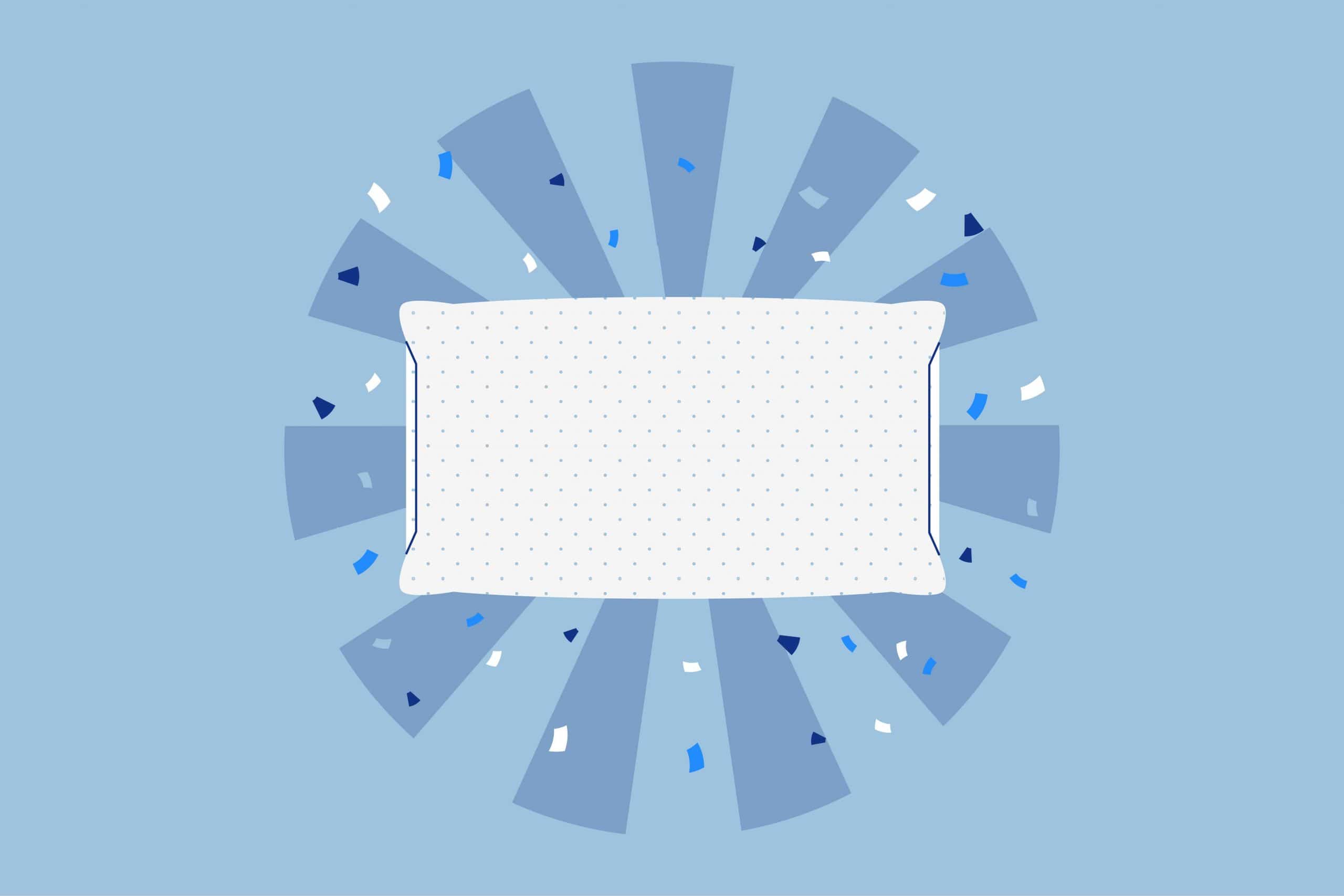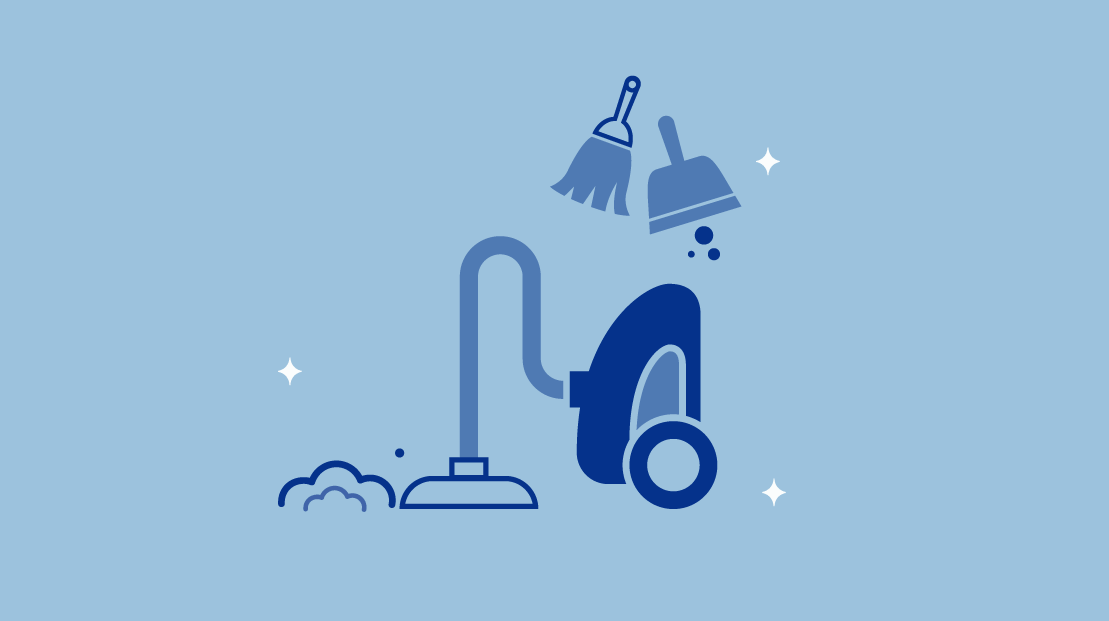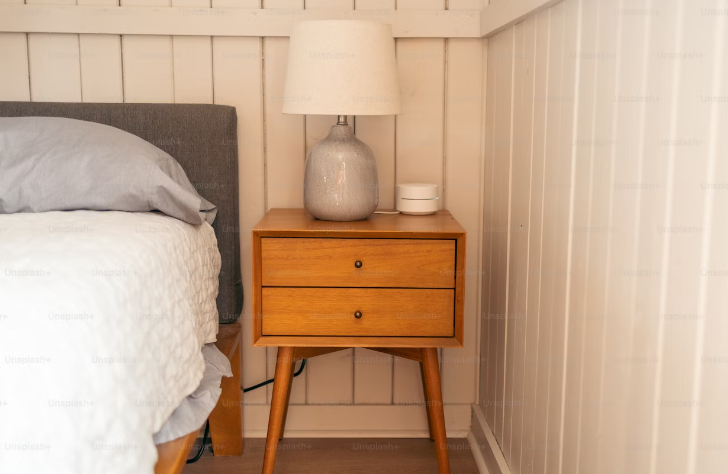Key Takeaways
- Hygiene and Allergen Protection: A pillow protector serves as a barrier against allergens like dust mites, dead skin cells, and pet dander, which can impact sleep quality and trigger allergies. It helps maintain a clean and hygienic sleep environment.
- Spill and Stain Prevention: The protector acts as a shield against liquid spills, preventing them from seeping into the pillow and causing lasting damage. This ensures that your bedding remains clean, hygienic, and allergy-friendly.
- Prolonged Pillow Life and Comfort: Using a pillow protector not only extends the lifespan of your pillow but also enhances sleep comfort. It provides an added layer of cushioning, maintains the shape of memory foam pillows, and is more durable compared to regular pillowcases.
A pillow protector is a bedding accessory that provides an additional layer of protection to keep your pillow clean, hygienic, and durable.
Have you ever wondered if a pillow protector is necessary? Well, not only does it protect your pillow from spills and stains, but it also shields against allergens that can trigger allergies and respiratory issues.
Investing in the best pillow protector is vital to ensure optimal sleep quality and long-term durability of your pillow. So, whether you need a pillow protector for a down pillow or just allergy protection, using a pillow cover is a must.
Whether you’re a side sleeper, back sleeper, or stomach sleeper, a pillow protector offers an extra layer of comfort and protection. Keep reading to learn how to choose the best pillow protector based on your specific needs.
Benefits of Pillow Protectors
The pillow protector protects your pillow from sweat, spills, and stains, ensuring that your sleep is uninterrupted. It also prevents the accumulation of dust mites and other allergens that can trigger allergies and asthma. The best pillow protector should be constructed from a high-quality, tightly woven fabric to create an effective barrier between you and your pillow.
Guarding Against Allergens and Dust Mites
If you’ve been experiencing allergies or respiratory issues, your pillow may be the culprit. Common allergens Verified Source National Library of Medicine (NIH) World’s largest medical library, making biomedical data and information more accessible. View source found in pillows include dust mites, dead skin cells, pet dander, and other allergens that can affect your sleep and overall health.
Dust mites, in particular, are microscopic creatures that thrive in warm, humid environments such as pillows. These creatures feed on our dead skin cells and can cause allergic reactions in some people. Pet dander is another allergen commonly found in pillows, which can trigger allergies and respiratory issues in sensitive individuals.
And we can’t neglect to mention the risk of mold in the bedroom. Mold spores are another allergen that tends to get brought in the home from outside. Pillows can be a fertile ground for mold spores to flourish, as they accumulate moisture and body heat. However, protectors keep the mold spores out.
Understanding how allergens can impact your sleep quality is crucial to maintaining a healthy sleep environment. Taking several measures to curb allergens in your bed, which can include not just pillow protectors but hypoallergenic bedding and taking advantage of the benefits of air purifiers, can help create an ideal sleep environment.
When exploring different types of pillow protectors, pay attention to features such as fabric breathability and barrier strength. These factors can influence their effectiveness in protecting against allergies.
Protecting Against Spills and Stains
If you’re prone to spills or accidents in bed, a pillow protector can be a lifesaver. The protector acts as a shield against liquid spills, preventing them from seeping into the pillow and potentially causing lasting damage. Using a pillow protector also helps to maintain clean and hygienic bedding that is asthma and allergy-friendly.
Say goodbye to worries about liquid spills and stains ruining your bedding with a quality pillow protector.
Enhancing Sleep Comfortably
Not only does a pillow protector provide an added layer of cushioning, but it also helps maintain the shape of memory foam pillows. Say goodbye to flat pillows and discomfort.
Another great benefit of using a pillow protector is the easy maintenance and durability that it provides. You can frequently machine wash the protector without worrying about its integrity, increasing its lifespan, and that of the pillow.
Compared to regular pillowcases, pillow protectors are more durable and retain their shape better, ensuring your pillow stays firm for longer.
Keeps Pests Away
In addition to comfort, a pillow protector also protects against bed bugs and other pests. With its tightly woven fabric, it forms a barrier that prevents these unwanted visitors from making a home in your pillows. Ensure a restful and bug-free sleep with a high-quality pillow protector.
Maintaining Hygiene and Durability
If you’re looking to maintain hygiene and prolong the lifespan of your pillows, using a pillow protector is a must. The practical benefits of using a pillow protector extend beyond just protecting against allergens and spills.
Machine Wash: One of the most convenient aspects of using a pillow protector is its ability to be easily cleaned through machine wash. It’s difficult to wash pillows themselves, and as such it’s good to be able to have an easy-to-clean protector.
Preventing Allergies: A pillow protector serves as a barrier that prevents allergens, such as dust mites and pet dander, from accumulating in pillows. Regular pillowcases, on the other hand, may trigger allergies and harbor these allergens, making them especially problematic for allergy sufferers.
Extending Pillow Life: In addition to protecting against allergens, using a pillow protector also extends the lifespan of both the protector and the pillow itself. By preventing oils, sweat, and dead skin cells from penetrating the surface of the pillow, a protector helps to maintain its shape and fluffiness, ensuring you get a comfortable sleep.
While regular pillowcases offer some protection to your pillows, they are not designed to provide the same level of protection as a pillow protector. A protector acts as an extra layer of defense, ensuring cleanliness and hygiene to stretch out the time between replacing a pillow.
Types of Pillow Protectors
When it comes to pillow protectors, the options are endless. You can choose from basic protectors to ones that cater to specific needs like bed bug protection or down pillows.
Basic Allergy Protection
Protect yourself against common allergens like dust mites, pet dander, and dead skin cells with a good pillow protector. Just allergy protection is a great option for anyone looking for something simple and effective.
Extra Protective Pillowcase
For extra protection against spills and stains, you can opt for an extra protective pillowcase. The tightly woven fabric acts as a barrier, preventing any liquids from reaching the pillow.
Organic Cotton Pillow Covers
If you’re looking for something sustainable and eco-friendly, organic cotton pillow covers are a great option. Made from organic cotton, they are free from harmful chemicals and pesticides that can trigger allergies.
Bed Bug Protection
Those who want to protect themselves against bed bugs can go for protectors specifically designed for bed bug protection. These protectors have a tightly woven fabric and a zipper closure that prevents bed bugs from entering.
Down Pillow Protectors
Down pillows need extra care, and a good pillow protector can help prolong their lifespan. Protectors for down pillows have a higher thread count and tighter weave to prevent any feathers from escaping the pillow.
Remember to choose a pillow protector that can cater to your specific needs. By doing so, not only will you keep your pillow clean, but also maintain a healthy and hygienic sleeping environment.
Selecting the Right Pillow Protector
When choosing a pillow protector, consider your specific needs and preferences. If you sweat at night, look for fabric that is breathable and can absorb moisture. For allergy sufferers, consider a tightly woven protector that acts as a barrier against dust mites and other allergens. When selecting a protector for a larger pillow size, make sure it fits properly and doesn’t shift during the night.
Similarly, you want to make sure your pillowcase size slips easily on and off the protected pillows. Comparing a pillow protector to a regular pillowcase, it’s easy to see the benefits of investing in the former. While a regular pillowcase may provide some protection against sweat and stains, it’s not designed to offer a barrier against allergens or bed bugs.
Fabric is also an essential consideration. Cotton is a popular choice for its softness and durability, while some people prefer organic cotton for its hypoallergenic properties. Other materials include polyester or microfiber, which offer a more affordable alternative.
Don’t underestimate the importance of using a pillow protector. It can make a significant difference in the quality of your sleep and help maintain a healthy sleep environment.
The Importance of Pillow Protection
A pillow protector is an essential bedding accessory that helps maintain a clean and healthy sleep environment. It complements your mattress protector to provide optimum protection, keeping allergens, dust mites, and other irritants at bay.
To experience a complete and restful sleep, including the purchase of a pillow protector in your bedding set is crucial. It complements other bedding accessories like mattress protectors and sheet sets to create a cohesive and protective sleep environment.
Creating a Complete Sleep Set
When it comes to achieving a restful sleep, using a pillow protector is just one piece of the puzzle. Pairing it with other bedding accessories like mattress protectors and bed sheet sets can create a complete sleep set that promotes comfort and hygiene.
Including a pillow protector in your bedding set also contributes to a healthy sleeping environment. It prevents mold growth, which can impact air quality and trigger allergies. Investing in a complete set of bedding protectors is a smart choice for those seeking a cleaner, healthier sleep.
Don’t skimp on your pillowcases and pillow shams either. Opt for a high-quality, breathable fabric that complements your pillow protector and sheet set. The right combination of bedding accessories can enhance your sleep experience and contribute to feeling more refreshed each morning.
FAQs
What is the difference between a pillow protector and a pillowcase?
A pillow protector is a specialized encasement designed to provide an extra layer of defense for your pillow against allergens, dust mites, and moisture. Typically waterproof and zippered, it acts as a barrier to protect your pillow’s longevity and maintain hygiene.
On the other hand, a pillowcase is primarily a decorative and soft covering that encases the pillow, providing a comfortable surface for direct contact with your skin.
What to look for when buying a pillow protector?
When purchasing a pillow protector, consider features such as material quality, waterproofing capabilities, breathability, and ease of maintenance. Look for protectors made from hypoallergenic materials like cotton or polyester, ensuring they are breathable for added comfort during sleep. Additionally, choose a protector with a secure closure mechanism, like a durable zipper, to guarantee effective coverage for your pillow.
Are you supposed to sleep on pillow protectors?
Ideally, you should use a pillowcase in addition to a pillow protector. Pillow protectors serve as a barrier against allergens and moisture, ensuring the pillow remains clean and hygienic over time. While they provide an added layer of protection, they may lack the softness and comfort that a pillowcase offers.
Therefore, using both a pillow protector and a pillowcase creates a comprehensive bedding solution, combining hygiene and comfort for a restful night’s sleep.
How often do you wash a pillow protector?
The frequency of washing your pillow protector depends on personal preferences and lifestyle factors. Generally, it is recommended to wash pillow protectors every 4 to 6 weeks or more frequently if you have allergies, respiratory issues, or if the protector becomes visibly soiled. Pillowcases should be washed every few days to once a week, though.
Following the care instructions provided by the manufacturer is crucial to maintaining the protector’s effectiveness and longevity.
What is the best material for a pillow protector?
The best material for a pillow protector depends on your specific needs and preferences. Cotton and polyester are popular choices due to their breathability and comfort. For those seeking waterproof protection, polyurethane or vinyl layers can be beneficial. Look for hypoallergenic materials if you have sensitivities.
Ultimately, the best material is one that aligns with your comfort preferences while providing the desired level of protection for your pillow.
Should I use a pillow protector with a bed sham?
Yes, using a pillow protector with a bed sham is a good idea. A pillow protector is designed to provide an extra layer of protection for your pillow, helping to keep it clean and free from allergens, dust mites, and stains. A bed sham, on the other hand, is a decorative cover for an extra pillow that adds style to your bed.
By using a pillow protector underneath the bed sham, you can maintain the cleanliness and longevity of your accent pillow while still enjoying the decorative aspect of the bed sham. This combination helps protect your pillow from spills, oils, and other potential sources of damage, extending the life of your pillow and ensuring a hygienic sleep environment.
Conclusion
Using a pillow protector is essential for achieving a better sleep experience and maintaining a healthy environment. The protection it provides against allergens, spills, and stains cannot be overstated. Ensure you select the right pillow protector based on your needs, paying attention to features such as zipper closure, machine washability, and breathable materials.
Investing in a good pillow protector will complement your bedding set, contributing to your overall comfort and hygiene. Don’t settle for just a regular pillowcase that doesn’t offer adequate protection against sweat, bed bugs and other allergens. Choose a protector that meets your needs and offers the best level of protection to ensure a sound sleep.
So, protect your pillow, protect your sleep. Choose a quality pillow protector for extended lifespan and cleanliness, and never worry about spills and stains again.
About the author
April Mayer is a sleep expert and writer with a degree in exercise physiology. She has dedicated her career to exploring the relationship between sleep and productivity. Her insightful articles, such as "The Surprising Way Your Mood Might Be Messing With Your Productivity" and "Wake Up to More Productive Mornings," have been featured in reputable publications like Forbes, Greatist, Real Homes, Thrillist, Tom's Guide, and Eat This, Not That. With a passion for helping others lead more productive lives through restful sleep, April offers valuable expertise on foods and vitamins for better sleep. As a trusted member of the Early Bird team since March 2020, she continues to provide informative and well-researched content.
View all posts





